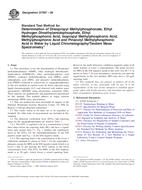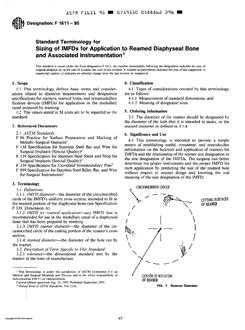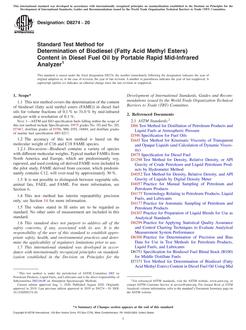1.1 This test method describes procedures for measuring the vapor pressure of pure liquid or solid compounds. Since no single technique is available to measure vapor pressures from 1 X 10-11 to 100 kPa (approximately 10-10 to 760 torr), two procedures are presented. An isoteniscope (standard) procedure for measuring vapor pressures of liquids from 1 X 10-1 to 100 kPa (approximately 1 to 760 torr) is available in Test Method D2879. A gas-saturation procedure for measuring vapor pressures from 1 X 10-11 to 1 kPa (approximately 10-10 to 10 torr) is presented in this test method. Both procedures are subjects of U.S. Environmental Protection Agency Test Guidelines. This method may not be appropriate for all mixtures.
1.2 These two methods were selected to provide data at normal environmental temperatures (10 to 60oC). At least three temperature values should be studied to allow definition of a vapor pressure-temperature correlation. Values determined should be based on temperature selections such that a measurement is made at 25oC (as recommended by IUPAC) (1), a value can be interpolated for 25oC, or a value can be reliably extrapolated for 25oC. Extrapolation to 25oC should be avoided if the temperature range tested includes a value at which a phase change occurs. Extrapolation to 25oC over a range larger than 10oC should also be avoided. The test methods were selected because of their extended range, simplicity, and general applicability (2). Examples of results produced by the gas-saturation procedure during an interlaboratory evaluation are given in . These data have been taken from Reference (3).
1.3 This standard does not purport to address all of the safety problems, if any, associated with its use. It is the responsibility of the user of this standard to establish appropriate safety and health practices and determine the applicability of regulatory limitations prior to use.
Product Details
- Published:
- 10/10/2001
- Number of Pages:
- 7
- File Size:
- 1 file , 86 KB


